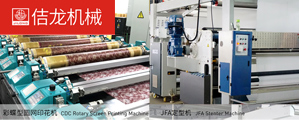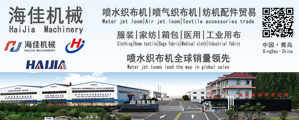Regional supply chains still shape textile and apparel trade
Mar 11, 2021 | by Zhao Xinhua

Textiles and apparel might be a global industry, but the latest statistics show trade patterns remain largely regional. However, changes are happening, and align closely with the shifting sourcing strategies of fashion brands and retailers and related free trade agreements – as shown in this new analysis by Dr Sheng Lu, associate professor in Fashion and Apparel Studies at the University of Delaware.
In general, three primary textile and apparel regional supply chains are operating in the world today:
• Asia: Here the region’s more advanced economies (such as Japan, South Korea and China) supply textile raw materials to the less developed countries (such as Vietnam, Bangladesh and Cambodia). With relatively lower wages, the less developed countries typically undertake the most labour-intensive apparel manufacturing processes and then export finished garments to leading consumer markets worldwide, including the United States and Western Europe.
• Europe: Within this supply chain, developed countries in Southern and Western Europe (such as Italy, France and Germany) serve as the primary textile suppliers. Mass market apparel products are typically manufactured by the region’s developing countries (such as Poland and Romania). In contrast, high-end luxury products are mostly produced in Italy and France. Furthermore, a high portion of finished apparel is shipped to developed EU members such as Germany, France and Italy for consumption. Despite Brexit, the UK remains a critical player in this EU regional textile and apparel supply chain.
•Western Hemisphere (WH): In this regional supply chain, the United States serves as the leading textile supplier, whereas developing countries in North, Central and South America (such as Mexico and countries in the Caribbean region) assemble imported textiles from the U.S. or elsewhere into apparel. The majority of clothing produced in the area is eventually exported to the U.S. or Canada.
While these three regional textile and apparel supply chains share many features, they also face unique opportunities and challenges. The following trade flows are critical to watch:
#1: Asian countries are increasingly sourcing textile raw material from within the region. As shown in the table above, as much as 85 percent of Asian countries’ textile imports came from other Asian countries in 2019, a substantial increase from only 70 percent in the 2000s. This reflects the formation of an ever more integrated textile and apparel supply chain in Asia. However, this also means textile and apparel producers in other parts of the world could find it increasingly challenging to get involved in the region. With several mega free trade agreements recently reached among countries in the Asia-Pacific region – such as the Regional Comprehensive Economic Partnership (RCEP) – the pattern of “Made in Asia for Asia” is likely to strengthen further.
#2: EU intra-region trade in textiles and apparel remains relatively strong and stable. Intra-region trade refers to trade flows between EU members. The table shows that 54.6 percent of EU(27) members’ textile imports and 37.4 percent of their apparel imports came from within the EU(27) region in 2019. This pattern has changed only slightly over the past decade. In other words, despite increasing competition from Asian suppliers, many of which even enjoy duty-free market access to the EU market (such as through the EU Everything But Arms programme), a substantial share of apparel sold in the EU is still locally made.
Consumer preferences for “slow fashion” – that is, purchasing fewer but more durable products with higher quality – may contribute to the stable EU intra-region trade pattern. Many EU consumers also see textiles and apparel as cultural products and do NOT shop simply for the price. This explains why Western EU countries such as Italy, Germany and France rank the top apparel producers and exporters despite their high wage and production costs.
Meanwhile, another component of the regional supply chain saw 69 percent of EU(27) members’ textile exports and 75 percent of their apparel exports going to other EU countries in 2019. This implies that keeping a competitive edge in the local EU market will remain the top business priority for most EU textile and apparel manufacturers.
#3: The Western Hemisphere (WH) supply chain faces significant challenges despite the seemingly growing popularity of “near-sourcing.” On the one hand, its textile and apparel exporters still rely heavily on the regional market. In 2019 as much as 79 percent of textiles and 86 percent of apparel exports from countries in the Western Hemisphere remained in the same region.
However, on the other hand, the Western-Hemisphere supply chain is facing increasing competition from Asia. In 2019, only 22 percent of North, South and Central American countries’ textile imports and 15 percent of their apparel imports came from within the region – a decade low. Similarly, in the first 11 months of 2020, only 15.7 percent of US apparel imports were from the Western Hemisphere, down from 17.1 percent in 2019 before the pandemic. Limited local textile production capacity and high production cost are the two notable factors that discourage US fashion brands and retailers from committing to more “near-sourcing” from the Western Hemisphere.
In comparison, Asian countries supplied a new record high of 62.2 percent of textiles and 75 percent apparel to countries in the Western Hemisphere in 2019, up from 49.1 percent and 71.1 percent ten years ago. This trend suggests that as the competitiveness of “Factory Asia” continues to improve, even regional trade agreements (such as USMCA and CAFTA-DR) and their restrictive “yarnforward” rules of origin have limited effectiveness in protecting the Western Hemisphere supply chain.
Looking to the future, several new free trade agreements and the ongoing impact of the Covid-19 pandemic will continue to shape regional textile and apparel trade patterns.
•In Asia, the reaching of RCEP is likely to accelerate the negotiation of other regional trade deals involving key players, such as the China-South KoreaJapan Free Trade Agreement. Should they offer additional preferential duty benefits and unify the rules of origin of existing Asia-based trade agreements, these new programmes could promote regional supply chain integration even further.
•After Brexit, the United Kingdom (UK) may seek to reduce its “EU exposure” and deepen trade ties with non-EU countries, such as the United States. In an interesting move, the UK also recently expressed its interest in joining the Comprehensive Progressive Agreement of the Trans-Pacific Partnership (CPTPP). However, EU members currently serve as the largest source of imports and the top export market for many UK-based textile and apparel companies. Whether Brexit will help UK textile and apparel companies diversify their supply chains remains to be seen.
•In the Western Hemisphere, many say that the reaching of RCEP puts pressure on the new Biden administration to consider joining the CPTPP and strengthen economic ties with countries in the Asia-Pacific region. Notably, several USMCA and CAFTA-DR members, such as Mexico, also have RCEP or CPTPP membership.
Apparel producers in these Western Hemisphere countries may find it more rewarding to access cheaper textile raw materials from Asia through CPTPP or RCEP rather than claiming the duty-saving benefits for finished garments under USMCA or CAFTA-DR. Like it or not, the Biden administration’s inaction will also have consequences.
Source: just-style.com








